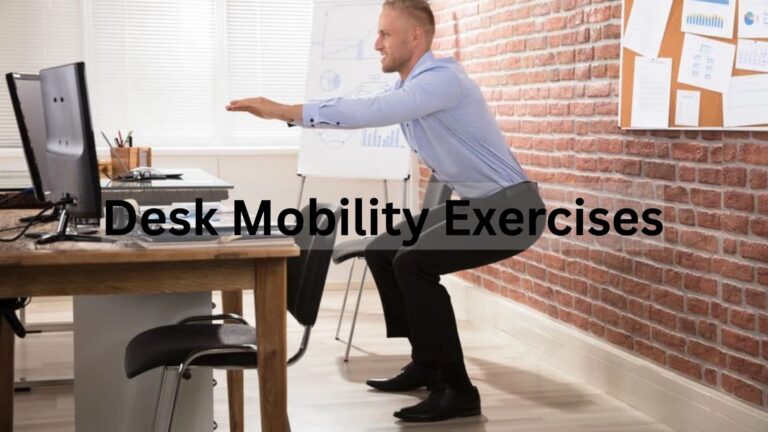Sitting at a desk for hours can take a toll on your body. Stiff shoulders, aching lower back, and tight hips are common complaints among office workers. While long hours in front of a computer are often unavoidable, practicing desk mobility exercises can help you stay flexible, reduce discomfort, and maintain overall physical health. These exercises are designed to increase joint mobility, improve posture, and reduce muscle stiffness, allowing you to feel energized throughout the workday.
In this guide, we’ll explore practical desk mobility routines, tips for staying consistent, and techniques to incorporate movement seamlessly into your workday.
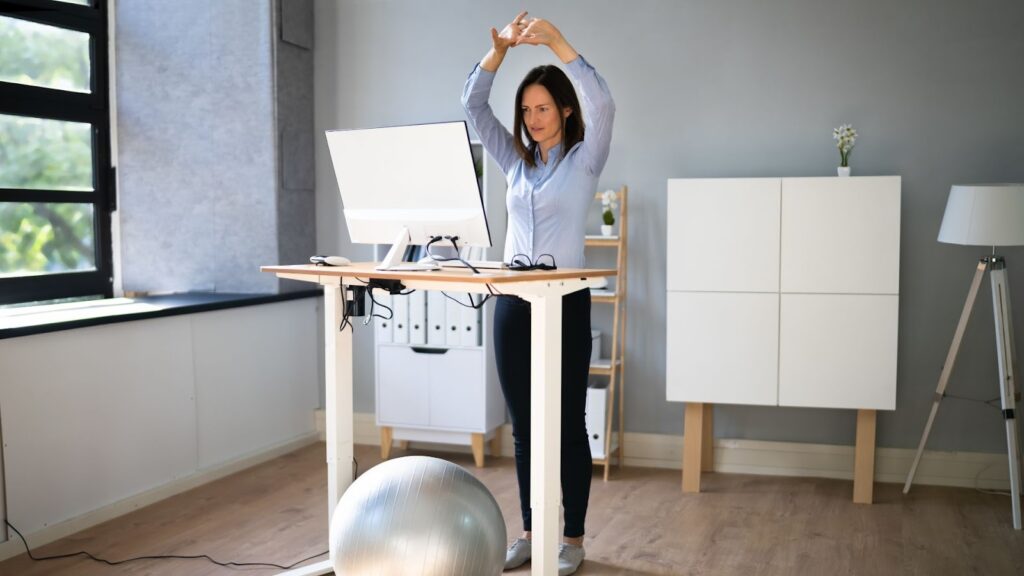
Why Desk Mobility Exercises Are Essential
Sitting for prolonged periods impacts your body in multiple ways:
- Reduced joint mobility: Prolonged sitting shortens hip flexors and limits shoulder rotation.
- Muscle stiffness and imbalance: Weak glutes, tight hamstrings, and tense neck muscles can lead to pain.
- Postural issues: Slouching or leaning forward can strain the spine and cause chronic discomfort.
- Decreased circulation: Remaining seated for long periods can reduce blood flow to lower limbs.
Desk mobility exercises combat these issues by:
- Promoting joint flexibility
- Improving muscle balance
- Enhancing posture and alignment
- Boosting energy levels and productivity
Even 5–10 minutes every hour of simple mobility work can significantly reduce discomfort and protect long-term health.
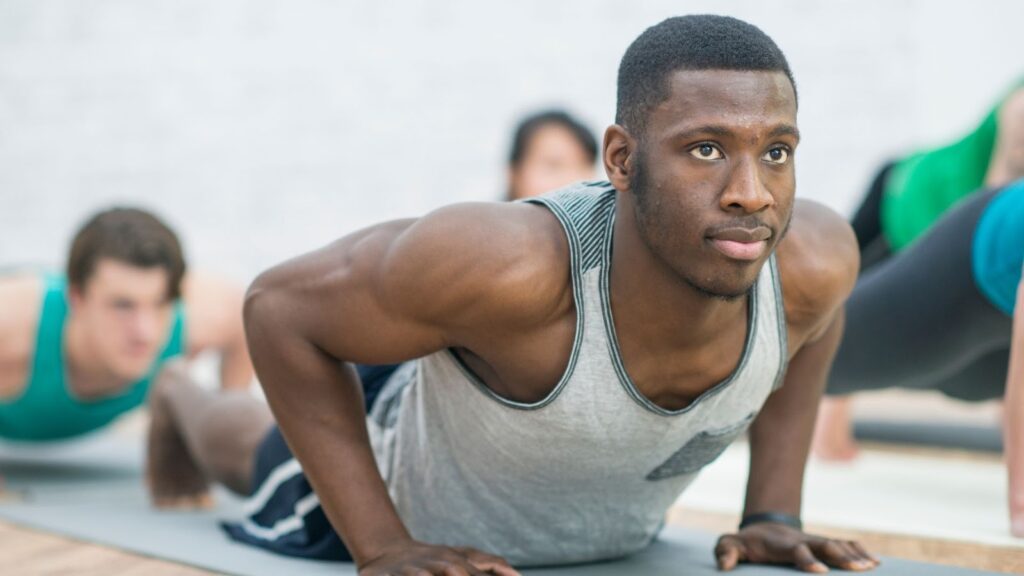
Upper Body Mobility Exercises
The upper body often suffers from prolonged desk work, resulting in tight shoulders, neck pain, and upper back stiffness. These exercises target shoulders, neck, and thoracic spine.
1. Shoulder Rolls
- Sit or stand tall.
- Slowly roll your shoulders forward in a circular motion 10 times.
- Reverse the direction for 10 backward rolls.
Benefits: Relieves tension and improves shoulder mobility.
2. Neck Stretch
- Sit upright and gently tilt your head toward your right shoulder, holding for 15–20 seconds.
- Repeat on the left side.
- Slowly rotate your neck from side to side.
Benefits: Reduces neck stiffness and improves cervical mobility.
3. Thoracic Spine Rotation
- Sit with feet flat and hands behind your head.
- Slowly rotate your upper body to the right, keeping hips stable.
- Return to center and rotate left.
- Repeat 10 times per side.
Benefits: Enhances spinal mobility and reduces upper back tension.
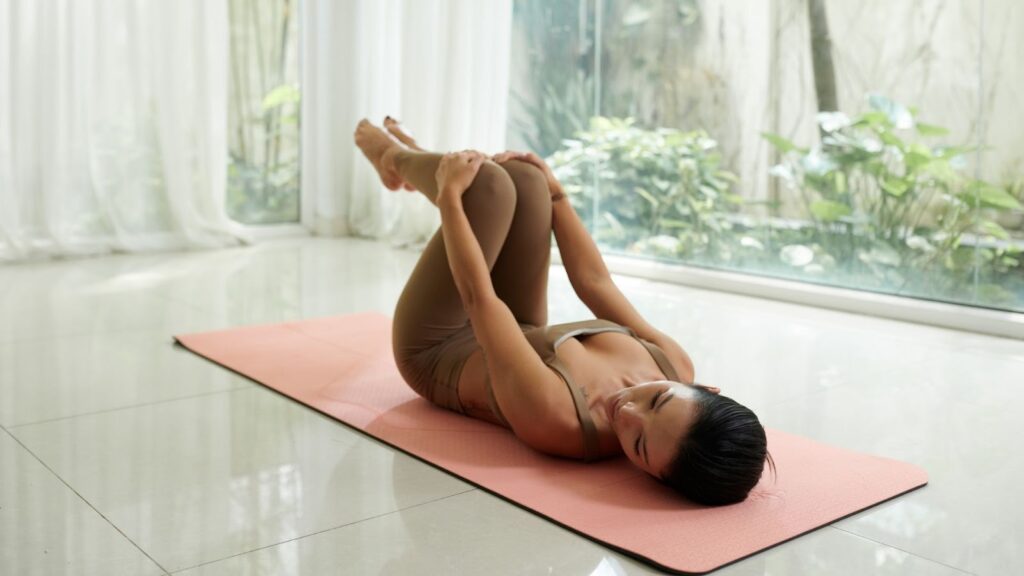
Lower Body Mobility Exercises
Sitting compresses the hips and can lead to tight hamstrings, hip flexors, and lower back pain. Lower body mobility exercises improve hip flexibility, knee movement, and leg circulation.
1. Seated Hip Openers
- Sit on the edge of your chair.
- Place your right ankle over your left knee.
- Gently press the right knee downward, feeling a stretch in the hip.
- Hold for 20 seconds and switch sides.
Benefits: Opens hips and relieves tight hip flexors.
2. Seated Leg Extensions
- Sit tall and slowly extend one leg forward until parallel to the floor.
- Hold for 5 seconds, then lower.
- Repeat 10 times per leg.
Benefits: Engages quadriceps and improves knee mobility.
3. Standing Hamstring Stretch
- Stand and place one foot slightly forward with heel on the ground.
- Keep the back straight and hinge at the hips to feel a stretch along the hamstring.
- Hold for 20–30 seconds per leg.
Benefits: Reduces hamstring tightness caused by prolonged sitting.
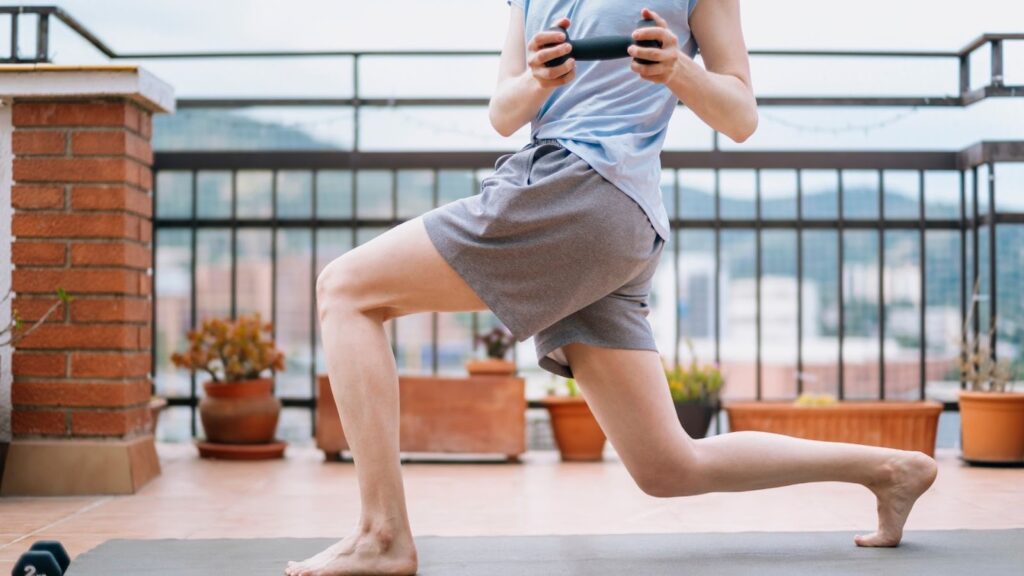
Core and Spine Mobility Exercises
A strong, flexible core supports proper posture and prevents lower back pain. Core and spine mobility exercises improve lumbar flexibility, stability, and spinal alignment.
1. Seated Cat-Cow Stretch
- Sit with feet flat and hands on knees.
- Arch your back, lifting the chest and looking up (Cow).
- Round your spine, tucking the chin toward the chest (Cat).
- Repeat 10 times.
Benefits: Increases spinal flexibility and relieves back tension.
2. Seated Side Stretch
- Sit tall and raise your right arm overhead.
- Lean gently to the left, keeping the torso elongated.
- Hold for 15–20 seconds and repeat on the other side.
Benefits: Stretches the obliques and lengthens the spine.
3. Standing Forward Fold
- Stand with feet hip-width apart.
- Hinge at the hips and let your upper body hang toward the floor.
- Slightly bend knees if needed and hold for 20–30 seconds.
Benefits: Relieves lower back tension and stretches the hamstrings.
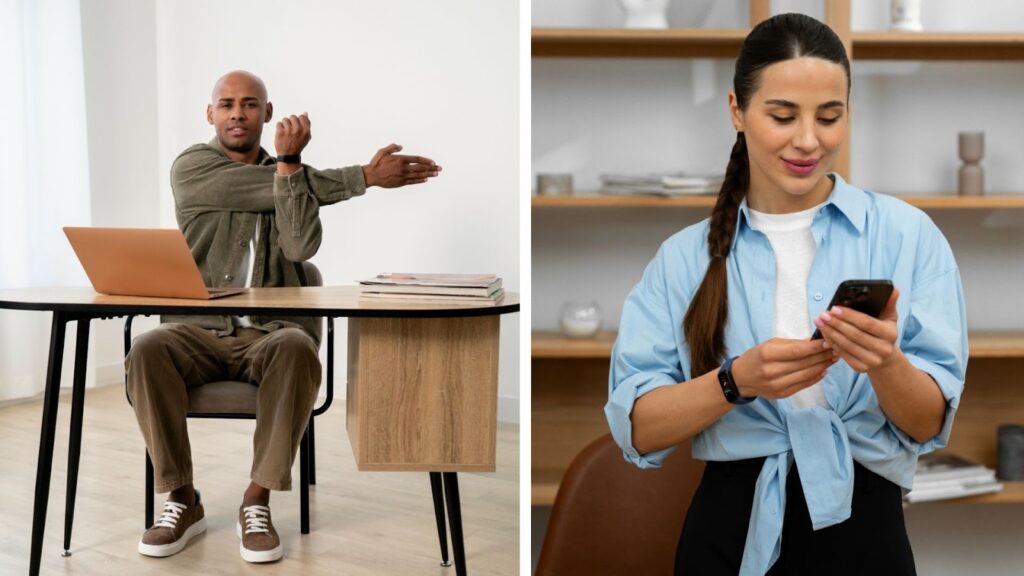
Desk-Friendly Mobility Tips
1. Set a Movement Reminder
Use alarms or phone notifications to remind yourself to move every 30–60 minutes. Even 1–2 minutes of movement improves circulation and reduces stiffness.
2. Use Ergonomic Equipment
Adjust your chair, monitor, and desk height to maintain neutral posture and reduce strain. A proper setup enhances the effectiveness of mobility exercises.
3. Incorporate Micro-Movements
Small adjustments, like shoulder shrugs, ankle circles, or standing up for water, keep your body active without disrupting workflow.
4. Combine Mobility with Breathing
Deep, mindful breathing during exercises improves oxygen flow, relaxation, and energy.
5. Stay Hydrated
Water helps maintain joint lubrication and muscle function, making mobility exercises more effective.
Benefits of Consistent Desk Mobility Practices
- Reduces pain and discomfort: Targeted exercises relieve tension in the neck, shoulders, back, and hips.
- Improves posture: Strengthens postural muscles to maintain spinal alignment.
- Enhances productivity: Moving your body increases blood flow and mental clarity.
- Prevents long-term injuries: Regular mobility work reduces the risk of repetitive strain injuries (RSI) and chronic musculoskeletal issues.
- Boosts energy and mood: Movement triggers endorphin release, reducing fatigue and improving focus.

Creating a Desk Mobility Routine
- Morning Activation (5–7 minutes)
- Shoulder rolls, seated cat-cow, hip openers.
- Shoulder rolls, seated cat-cow, hip openers.
- Midday Reset (5 minutes)
- Thoracic spine rotations, standing hamstring stretch, leg extensions.
- Thoracic spine rotations, standing hamstring stretch, leg extensions.
- Afternoon Recharge (5 minutes)
- Seated side stretches, ankle circles, standing forward fold.
- Seated side stretches, ankle circles, standing forward fold.
- Consistency is Key
- Schedule these sessions as mini-breaks throughout your day.
- Gradually increase duration as you gain flexibility and strength.
- Schedule these sessions as mini-breaks throughout your day.
Tips to Stay Motivated
- Keep exercises simple: Focus on 3–5 movements that target your main tension areas.
- Track progress: Note improvements in flexibility, posture, or reduced discomfort.
- Use visual cues: Place sticky notes on your desk reminding you to move.
- Involve colleagues: Encourage a team routine for added accountability.
- Reward yourself: Celebrate consistency and improvements to stay motivated.
Conclusion: Stay Flexible and Pain-Free at Work
Incorporating desk mobility exercises into your daily routine is essential for anyone who spends extended periods seated. These simple yet effective movements help reduce pain, improve posture, increase energy, and maintain joint flexibility. By dedicating just a few minutes every hour to mobility exercises, you can protect your body from the harmful effects of prolonged sitting and enjoy a more comfortable, productive, and pain-free workday.
Start today: integrate these exercises into your desk routine, set reminders, and commit to staying active. Your body will thank you with improved flexibility, less discomfort, and renewed energy for work and life.


